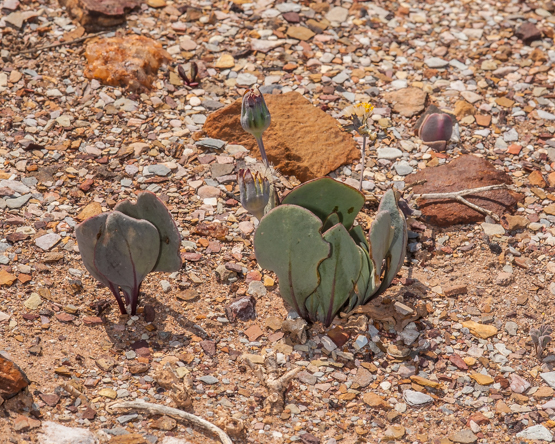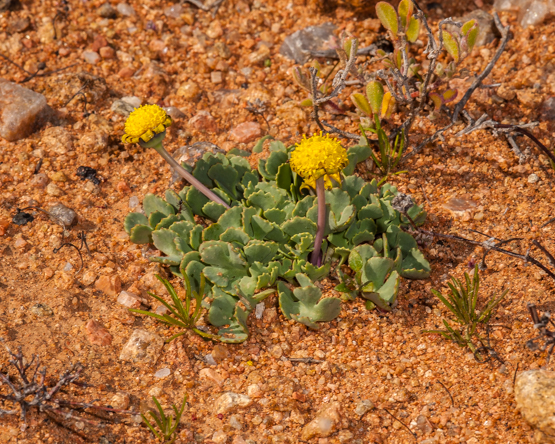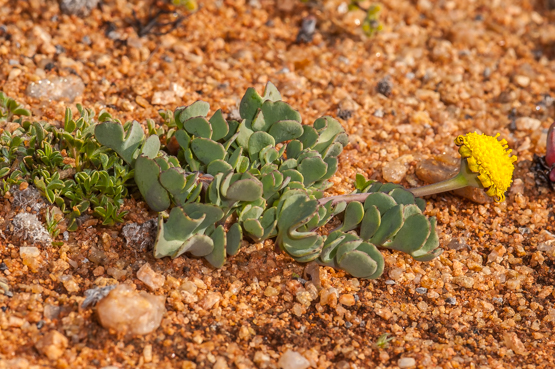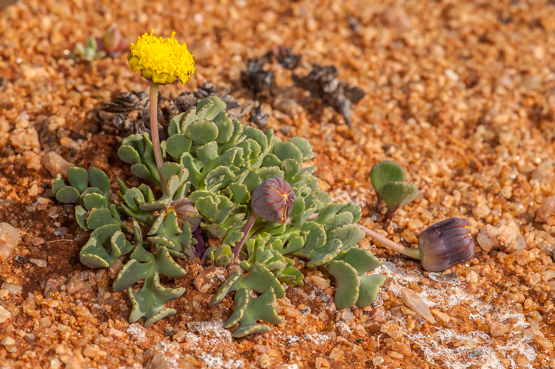Almost two years ago I published a post on Othonna auriculifolia. Today’s subject could be considered the northern counterpart of that species. Both were described in the first half of the 19th century, when taxonomy was still a very European science. This probably explains why both specific epithets refer to well known European plants: taraxacoides means looking like a Taraxacum (dandelion) and auriculifolia means with leaves like Primula auricula (bear’s ears or cow slip).
O. taraxacoides is a stemless tuberous geophyte up to 10 cm tall. The leaves are leathery and wedge- to egg-shaped or more or less kidney-shaped. Usually they are 2-3 cm long and up to 2 cm wide, with small rounded teeth and often incised with 3-5 rounded lobes.
The flower heads are 0.8-1.5 cm in diameter and appear in July and August.
The plants occur on open pebbly places or quartz patches from the
Richtersveld to Kamieskroon.





